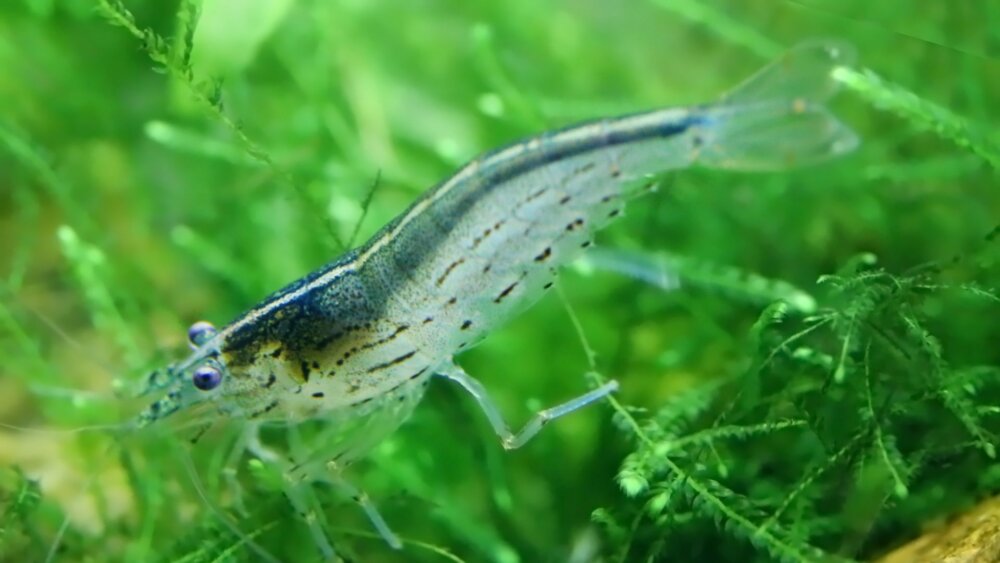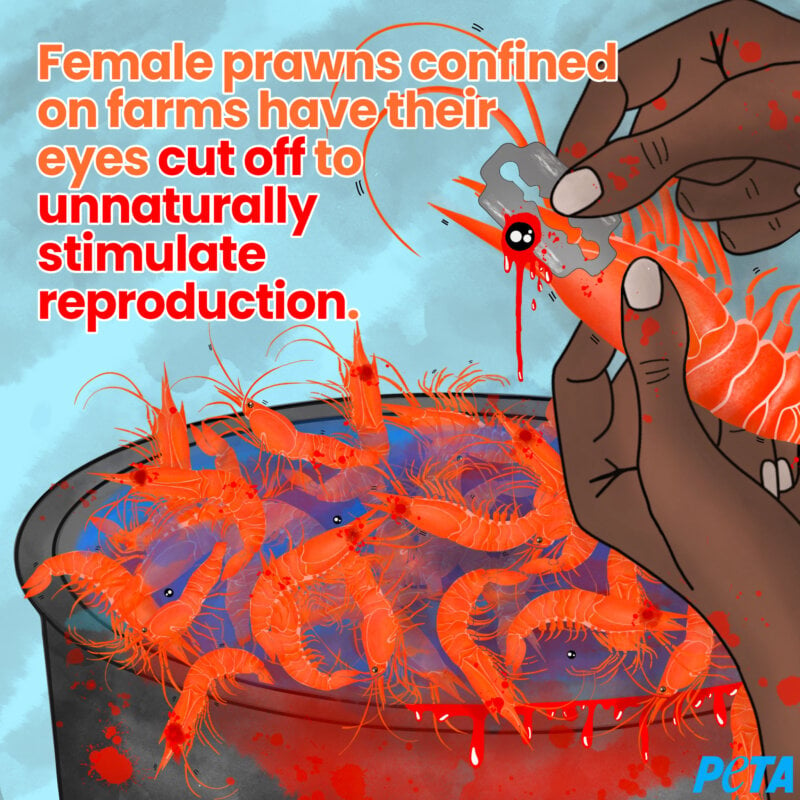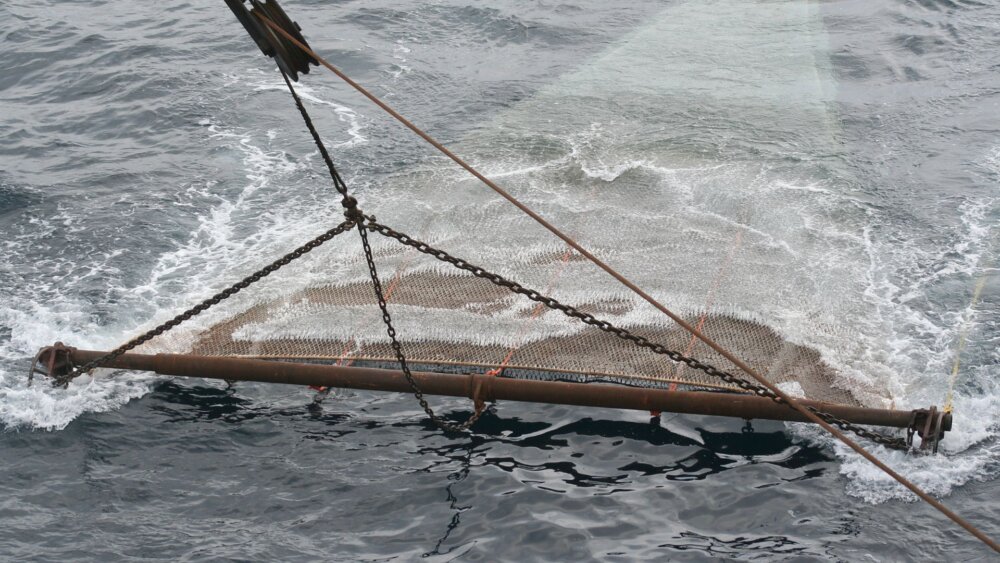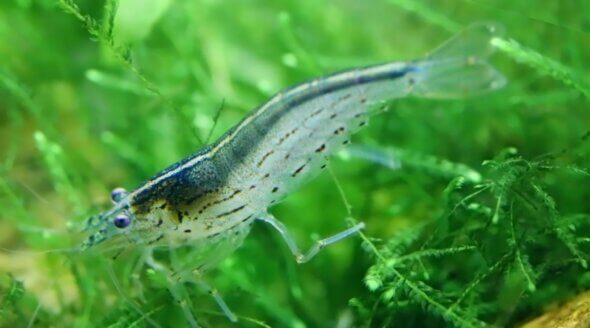Still Eating Prawns? Eyestalk Ablation Will Change Your Mind Forever
You have likely heard about the horrific treatment of cows, pigs, and chickens on factory farms – but what about prawns and shrimp? These fascinating, complex animals endure trauma and mutilation on prawn farms around the world.
Female prawns and shrimp confined to farms have their eyes cut off in a grotesque practice called eyestalk ablation. This mutilation is done to encourage mothers to reproduce faster in order to line prawn farmers’ pockets.

Eyestalk Ablation: Prawns’ Eyes Are Cut Off With a Blade
Female prawns and shrimp have a gland behind their eyes that is linked to reproduction. Usually, mothers would only reproduce in suitable conditions – and unsurprisingly, most don’t consider stressful factory farms to be suitable. Farmers destroy their eyes as a result, blinding them to stimulate egg production.
The procedure could inspire a horror film: farmers may remove one or both eyes with a blade or by tying a wire around the eyestalk, causing it to fall off after a period of time.
This happens on almost all prawn and shrimp farms around the world. So if you still eat prawns, you are supporting this horrific mutilation.
Yes, Prawns Feel Pain
Anyone who has spent time with cats or dogs knows they feel pain, fear, joy, and love. It’s also true for crustaceans, like prawns and shrimp. Did you know that UK law now recognises this through the Animal Welfare (Sentience) Act?
Science backs it up, too – researchers at Mexico’s Instituto Politécnico Nacional found that eyestalk ablation caused prawns to exhibit behaviour associated with pain, such as disorientation, flicking their tails (an escape reflex), and rubbing the mutilated area. Cutting off animals’ eyes causes them pain – obviously.
Prawns and Shrimp Have a Complex Visual System
Mantis shrimp have the most complex visual system in the world: unlike humans, these crustaceans can see ultraviolet and infrared wavelengths. Taking away their vision would be akin to removing Superman’s powers.
And they may be small, but they are mighty – mantis shrimp have the strongest punch of all animals on the planet – the acceleration of that punch is faster than a bullet out of a gun.
Demand for Prawn Flesh Linked to Human Rights Abuses
According to a report by the Environmental Justice Foundation, the demand for prawn flesh has led to agricultural conflict, resulting in social problems such as increased poverty, landlessness and food insecurity, displacement of communities, pollution of drinking water, poor working conditions, and impacts on health and education.
In Thailand – the world’s largest producer of farmed shrimp – forced labour is widespread throughout the industry. A report by Human Rights Watch revealed that migrant fishers are trafficked from neighbouring Southeast Asian countries. These workers do not receive Thai labour law protections and are paid below minimum wage. Testimony from a trafficking survivor exposed how some workers had to request permission from employers to quit but were told they must pay off debt first.
Environmental Destruction Issues, One Among Many
Bottom trawling – one of the most environmentally destructive forms of fishing – catches and kills fish indiscriminately, meaning that octopuses, sea horses, and others are caught in the enormous nets. The victims are then turned into pellets to feed the prawns on factory farms – which occupy space that used to be healthy mangroves.
Mangrove forests found along tropical coastlines are home to many wonderful but threatened species, such as turtles and manatees. However, compared to 1940, half of global mangrove cover has been lost. Around 30% to 50% of this habitat loss is down to shrimp farming between the 1970s and 1990s.
How We Can Stop Prawn Mutilation
To help stop prawns and shrimp from having their eyes cut off, we must stop eating them. The only way to ensure that you are not directly causing their suffering is to go vegan.









